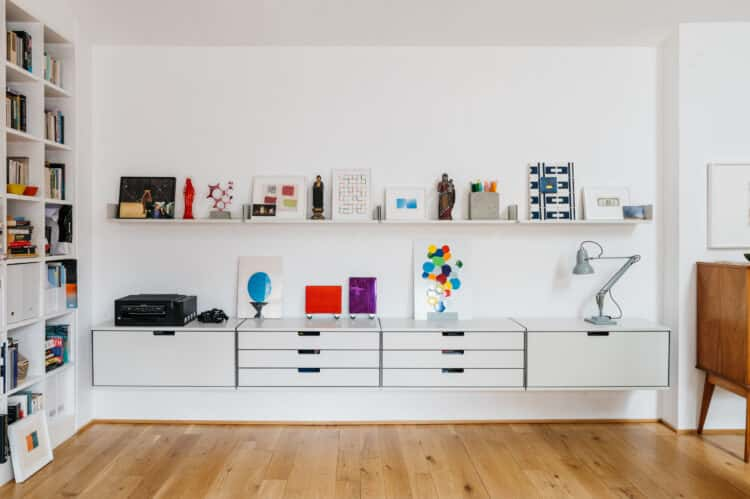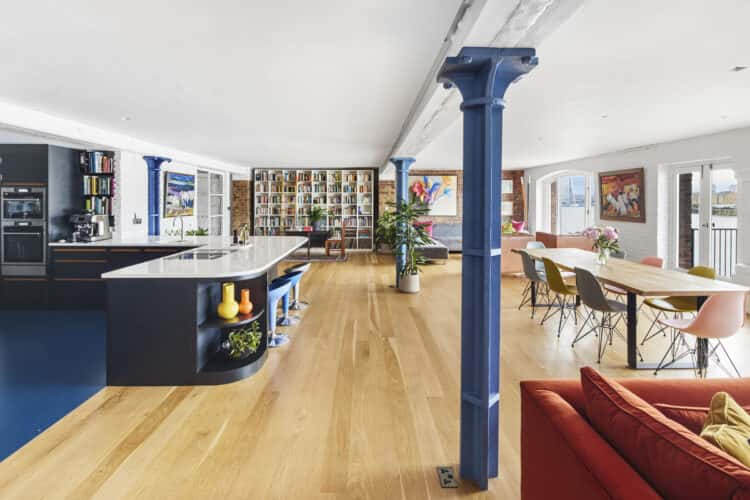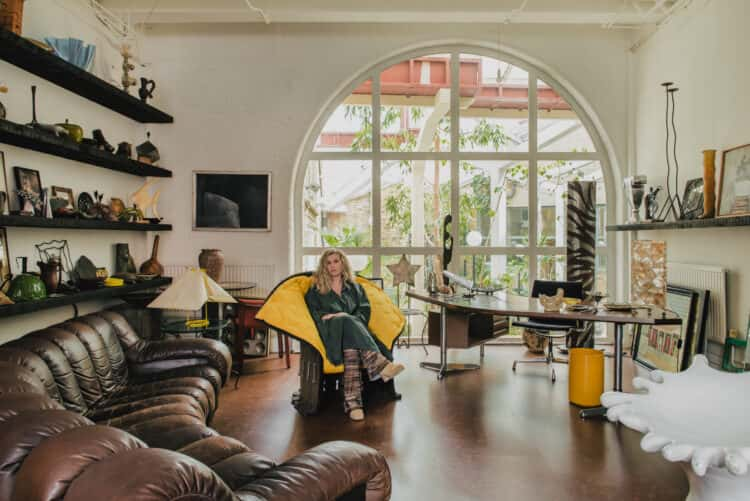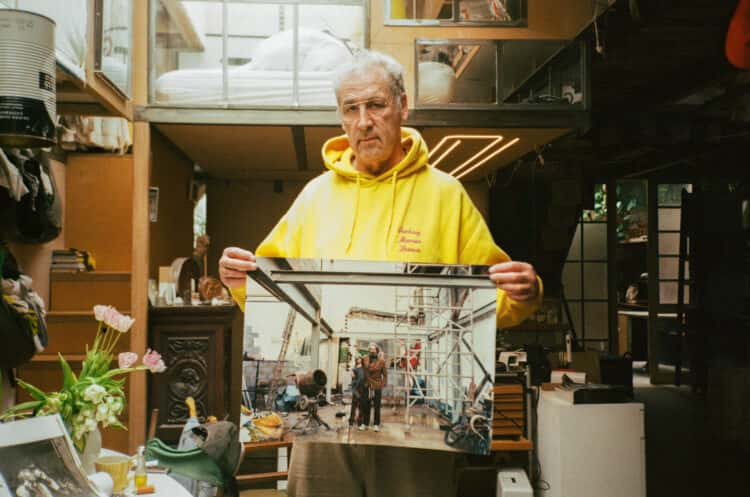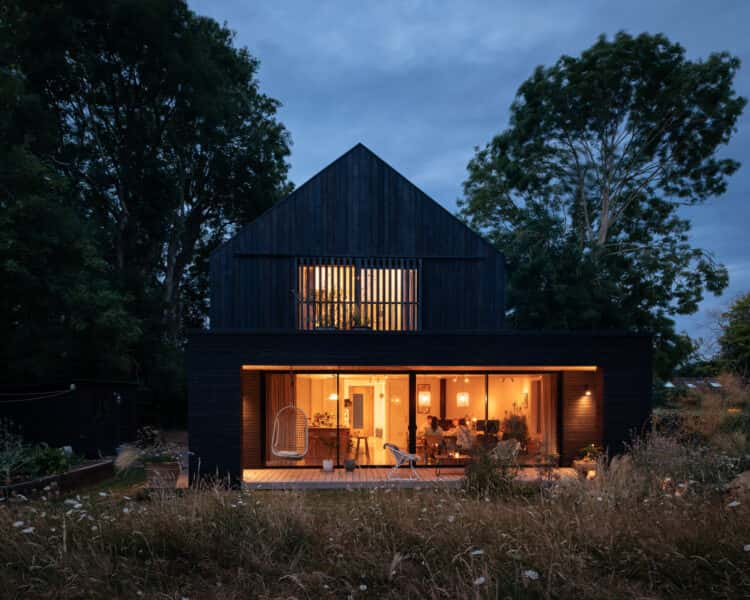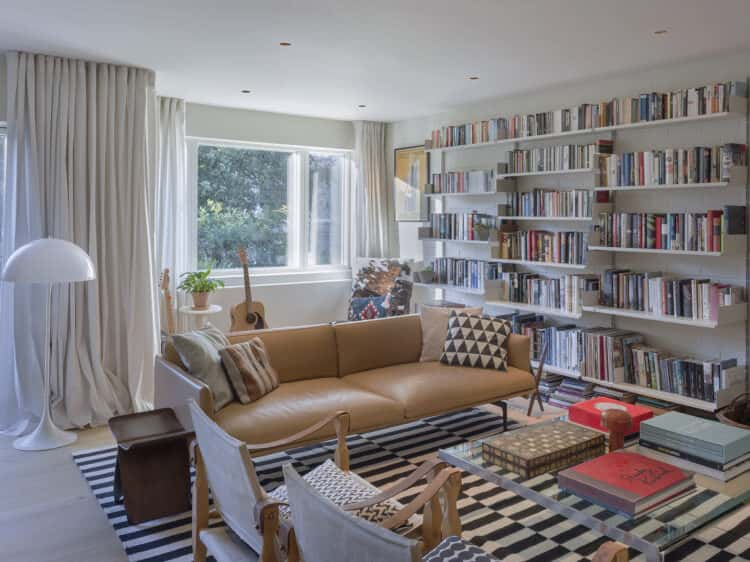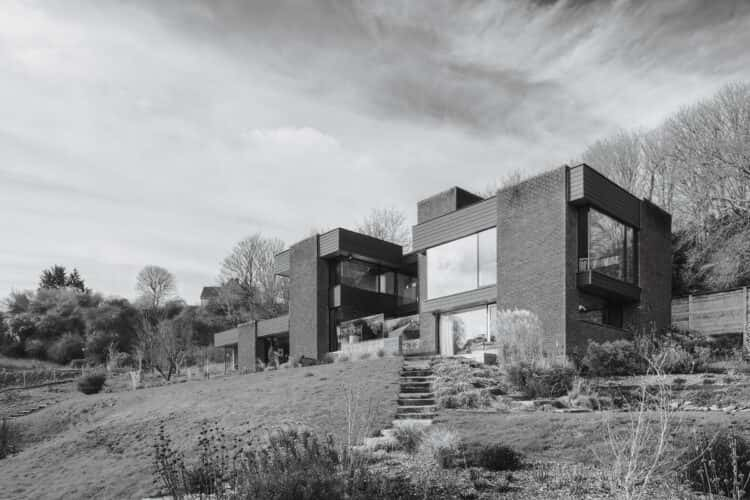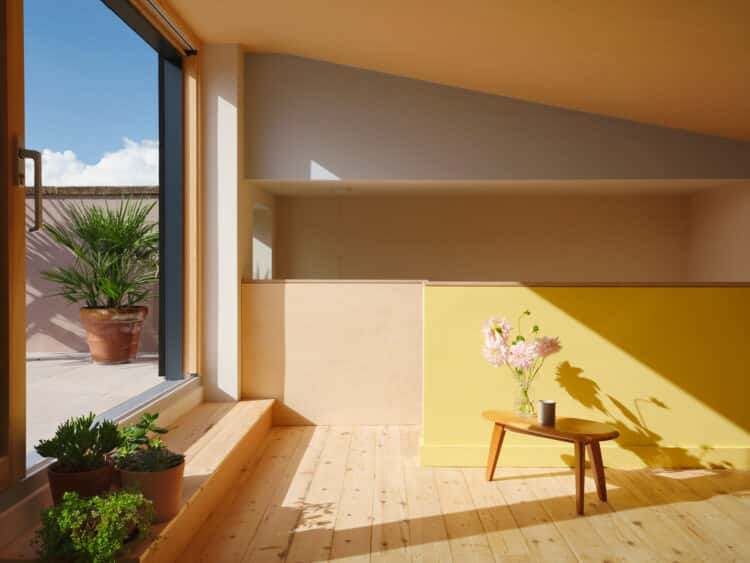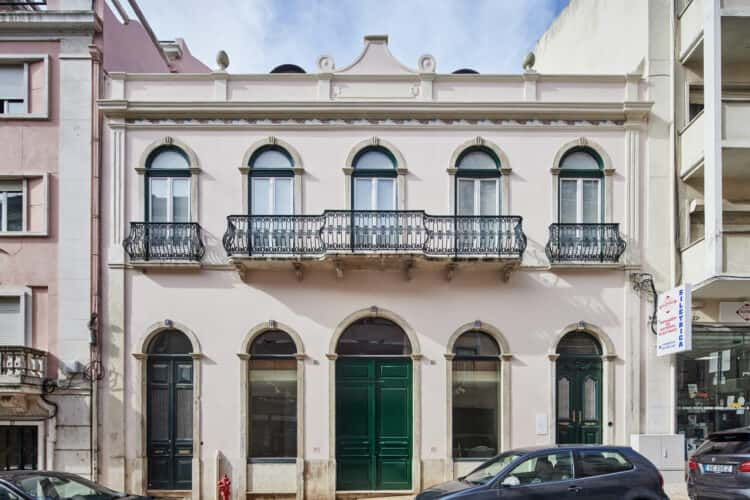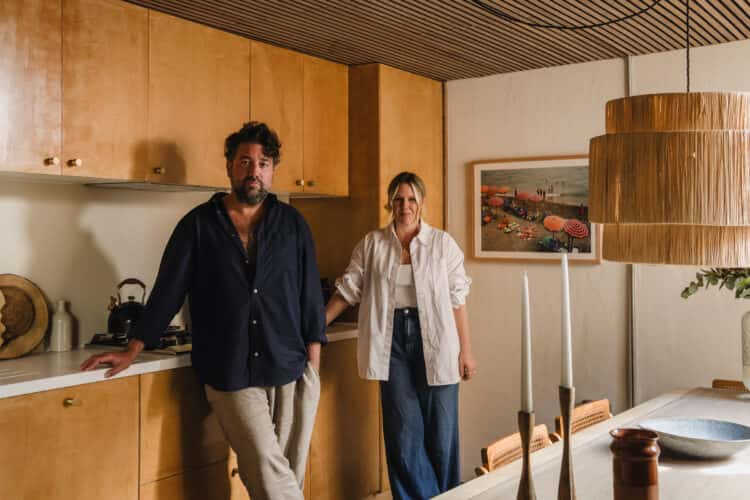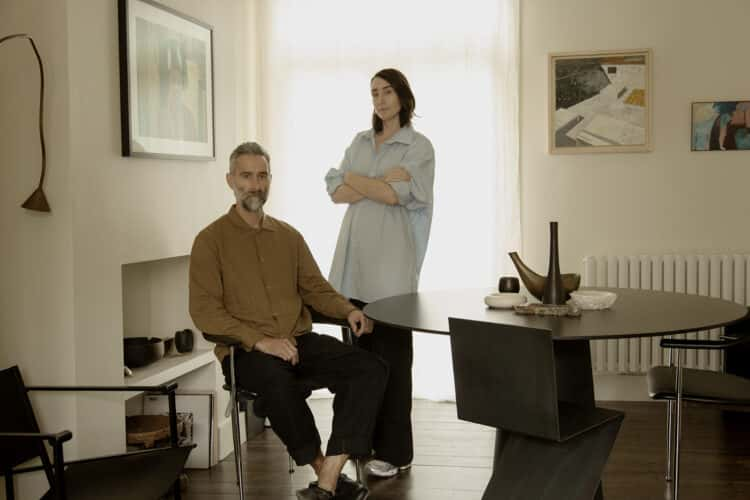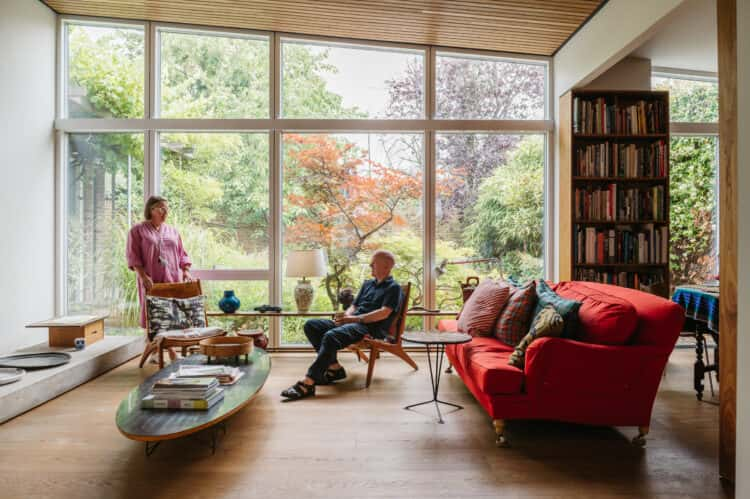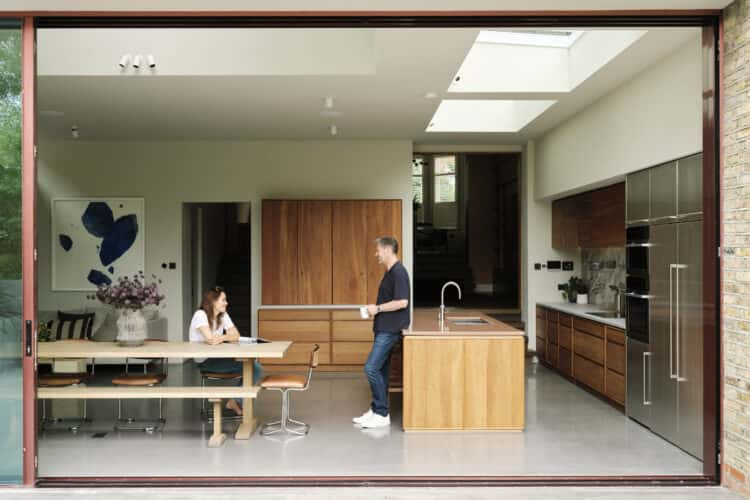A conversation on colour with artist David Batchelor and curator Ann Gallagher at their home in east London
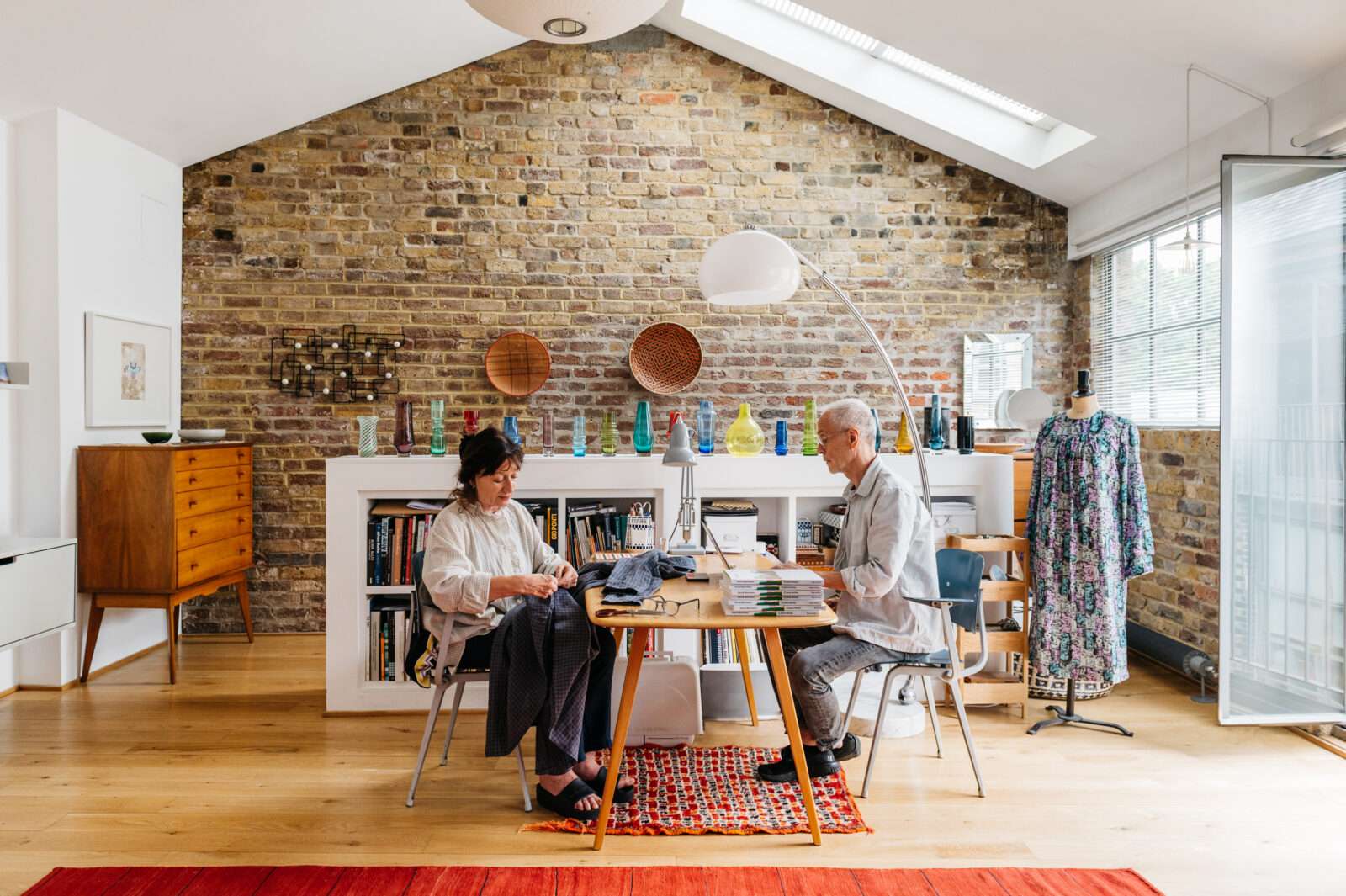
David and Ann live in a converted woodworking shop, which they have honed to suit their varying needs: it’s a place to relax and entertain, a workspace and sometime dressmaking studio for Ann. It’s even a library of sorts – piles of books fill their bespoke wall-wide bookshelf, so much so that they had to introduce a one-in, one-out system. “We didn’t tidy them before you came,” Ann confesses. But they don’t look jumbled, just thoroughly thumbed and enjoyed. Sitting around the large desk in the study, the couple discuss how they utilise the space for their creative needs, compromised on their polarising colour palettes, and made room for Ann’s ever-growing supply of fabrics. Plus, David tells us about his first large-scale exhibition, ‘Colour Is’, at Compton Verney in Warwickshire.
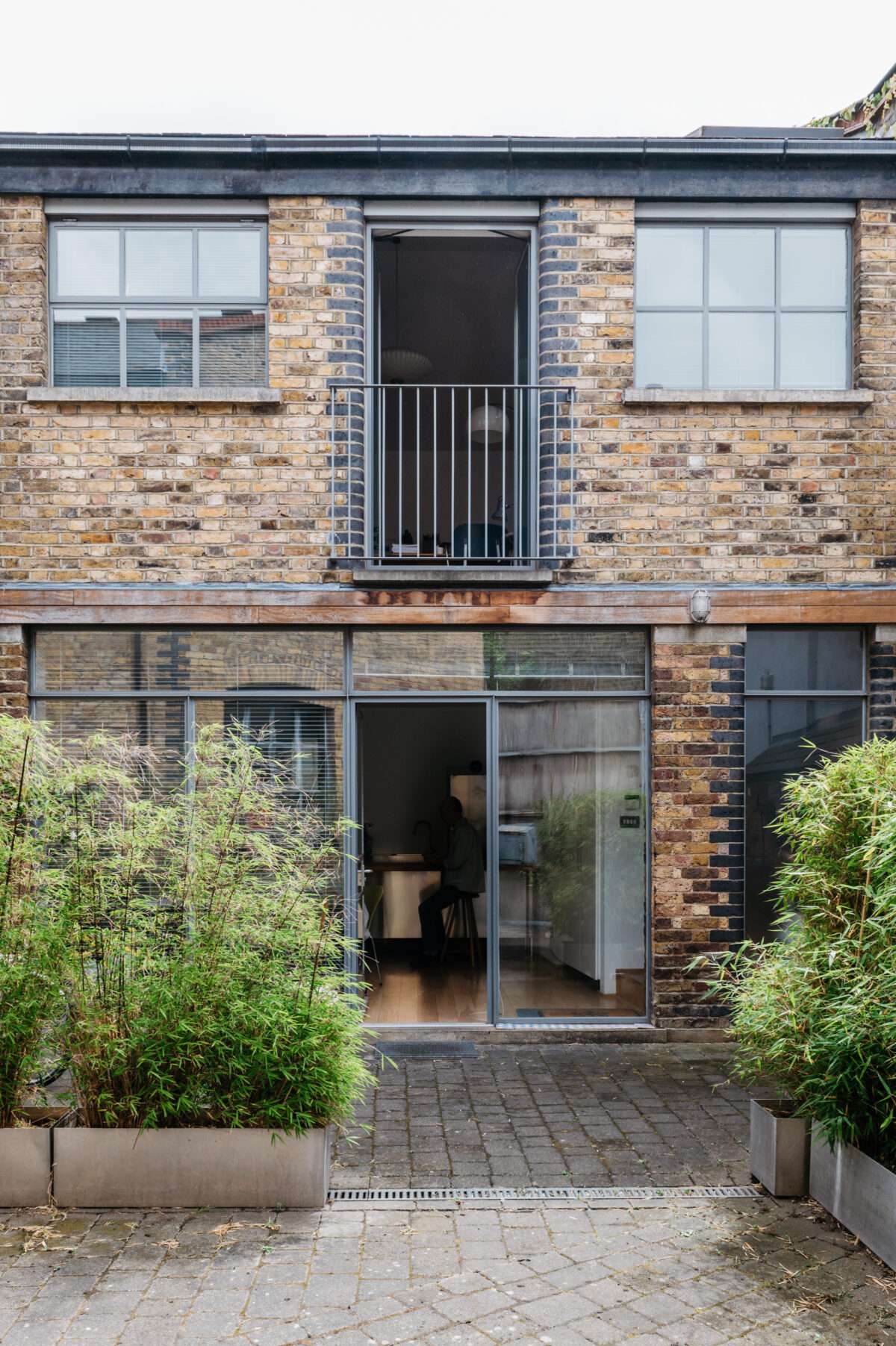
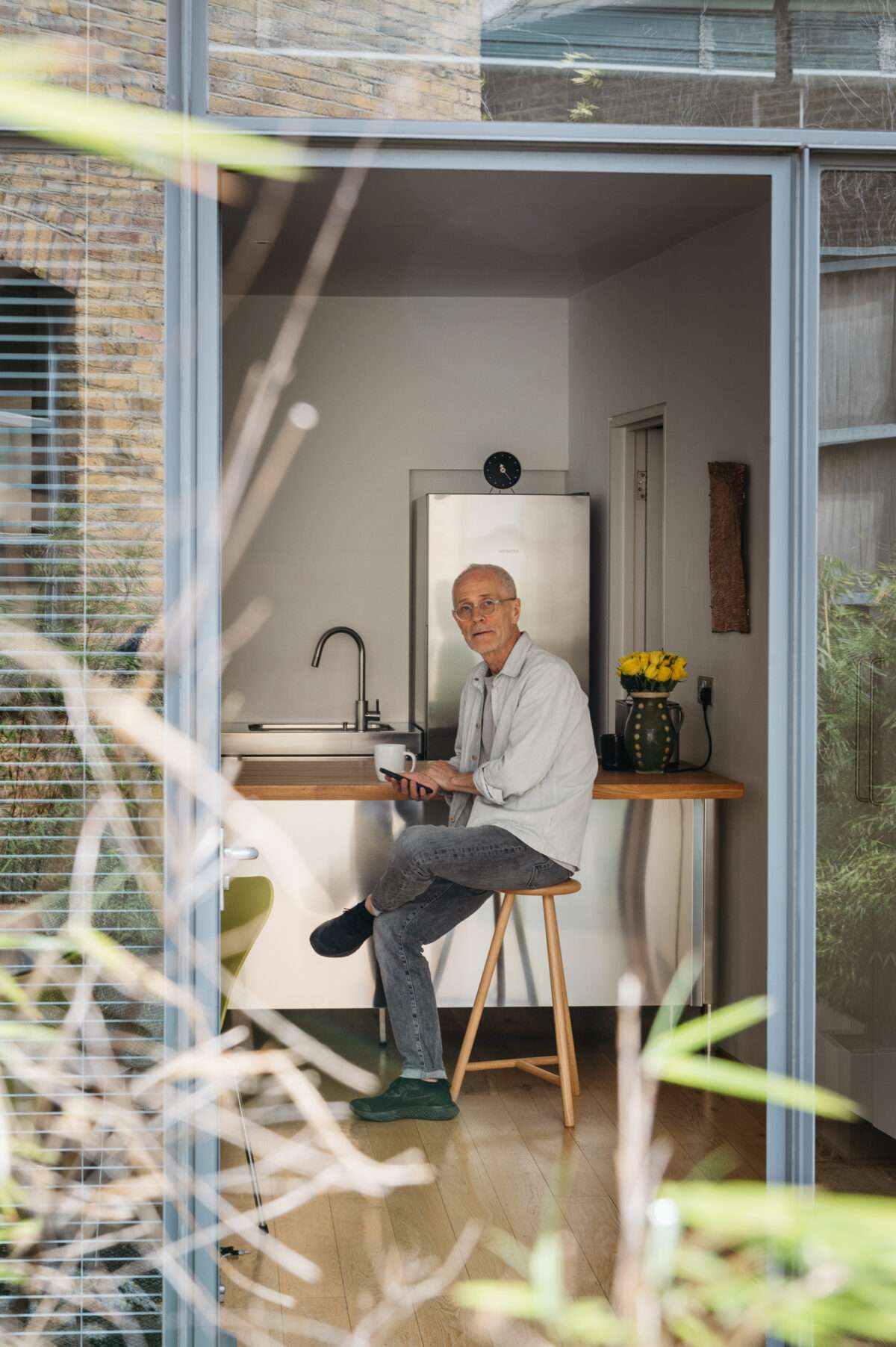
David: “We moved to Tower Hamlets 19 years ago, in 2003 – from just 500 yards away in Hackney. The building was formerly 12 woodworking shops, which have been turned into six dwellings by Karakusevic Carson Architects. Ann would walk past the yard every day. As soon as she saw a ‘For Sale’ sign, she gave the estate agents a call.”
Ann: “The place was two storeys, freehold, with a terrace – and it had been converted in a really tasteful way. All the floors were oak, the fittings were plain. It had been designed as a live/work space but we wanted to reduce the ‘work’ bit slightly, flip it around and make it feel more like a living area with an office.”
David: “The upstairs and downstairs spaces were completely open plan. We didn’t do much work to the building, apart from upstairs, where a friend built a dividing wall with bookshelves and sliding doors for us, and added a built in wardrobe.
“My studio is in Bow, about 20 minutes from here, so it’s just a cycle away. I’ve always had a studio that’s separate from my home – I use the working space here more as an office. But my routine generally involves going to the space in Bow every day. Occasionally I write and I do a little bit of teaching at Goldsmiths University, where I’m a professor now, which my wife finds inordinately amusing. But everything I do – the writing, the teaching, the studio work – is all focused around the big subject of colour.
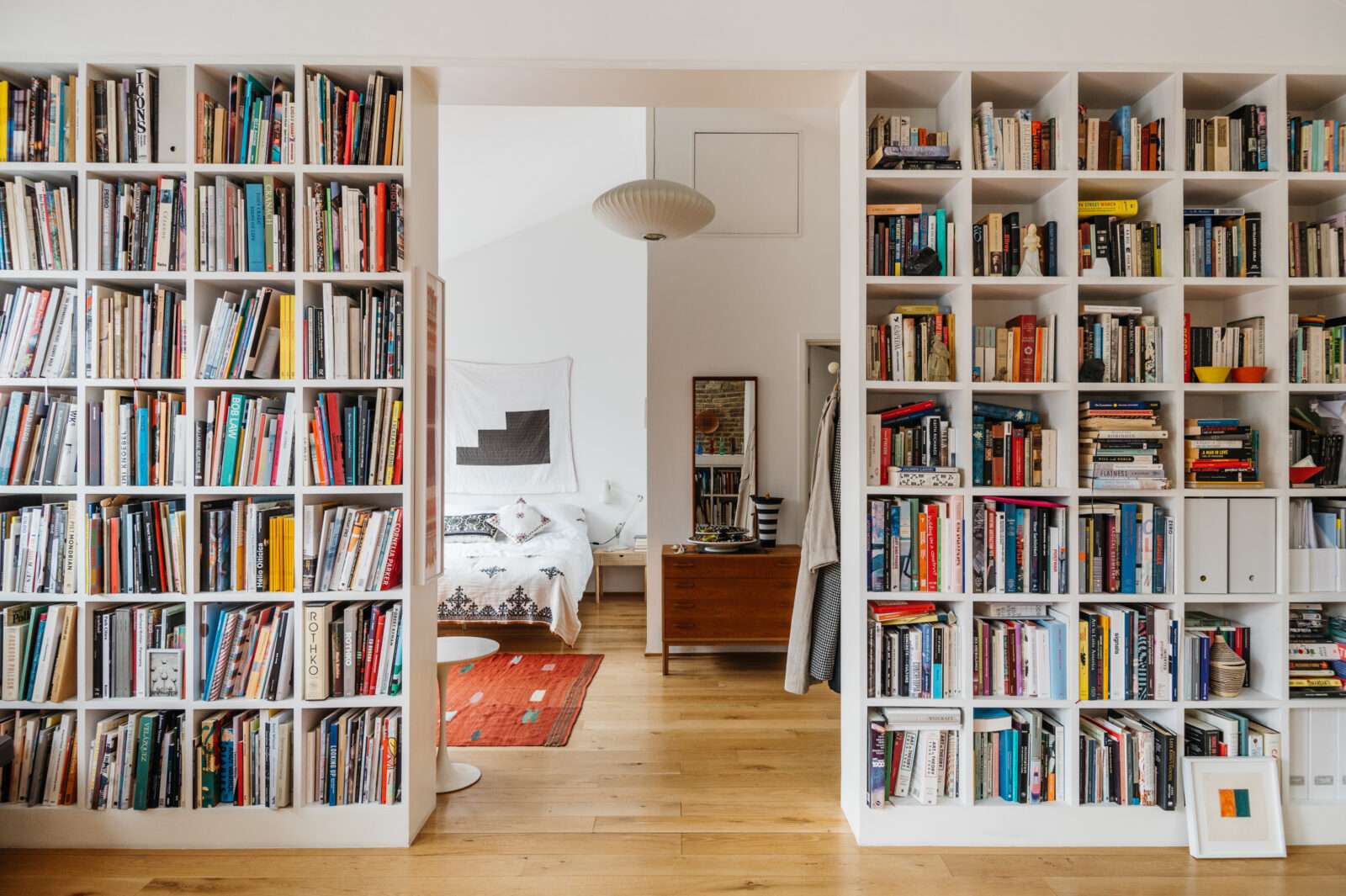
“All of my work for the last 30 years has been about colour, which I have explored through the mediums of sculpture, installation, painting and drawing. I published a book about 20 years ago called Chromophobia about the fear of colour in the West, which was partly initiated by going to a very large house where everything in it was black, white or grey. It was a very sophisticated design-led place and I just thought, ‘What’s the problem with colour here? Why has so much effort been put into excluding it?’
“‘Colour Is’ is my first proper retrospective, showcasing three decades of work, which is quite a strange thing to experience. Some of my older work still looks interesting, and some of it is frankly embarrassing, but I guess that’s normal. It’s like looking at photographs of yourself when you’re a teenager.”
Ann: “’I left my job at Tate, as director of collections for British art, after 15 years, at the end of 2019. Since then I have been working freelance, so our home has become my primary workspace. I also returned to sewing as a hobby after many years. I make mostly clothes for myself and occasionally for friends. Especially when I am really busy with work, I find it a relaxing. It’s a way to switch off, to do something with your hands rather than your head. We’ve just had to buy a new chest of drawers to store all the fabric I’ve collected.”
David: “‘Store’ sounds far too organised…”
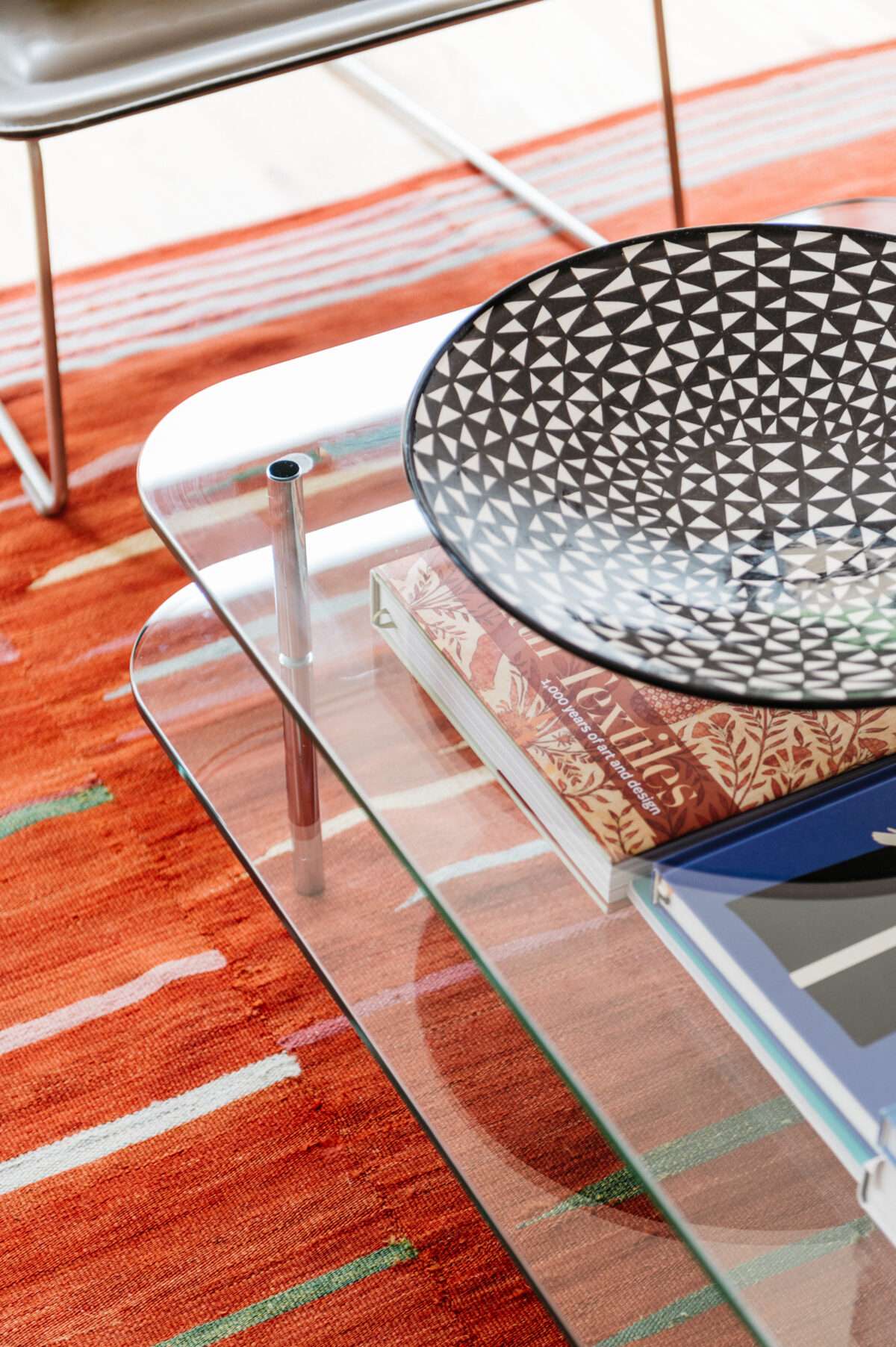
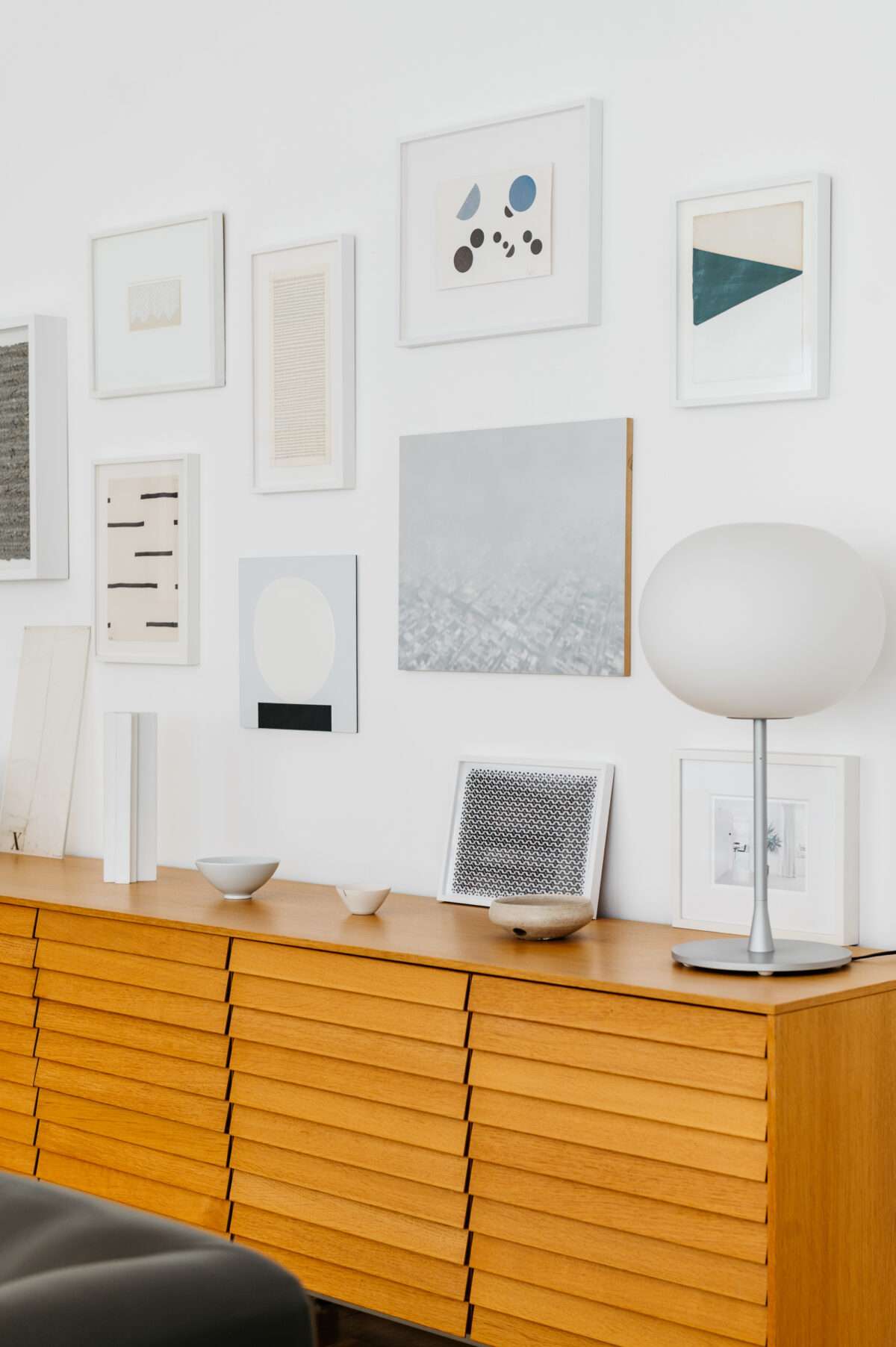
Ann: “I’m a collector of fabrics. I don’t buy fabrics in order to necessarily make something, I just buy fabrics if I like them. The one I’m currently working with is by Althea McNish, who has a show at the William Morris Gallery until September. Liberty sponsored the exhibition, because they produced her original designs and they’ve recently reissued a lot of them. Her work is quite colourful, but really, I love a black and white palette.”
David: “If there’s any area of our lives where we’re in dispute, it might be colour. Ann is totally chromophobic! Her default palette is black, white and grey. Of course, I don’t dislike those shades – they’re very useful. The arrangement we have come to here is to have a neutral backdrop – white walls and natural materials, such as the brick – with colourful accents on top.”
Ann: “I do think colour looks better against a white background…”
David: “…Well it does, that’s the thing. Black and white is very good at making brighter colours stand out. Look at our colourful vases, for instance, which sit upon a white unit. They are by a company called Riihimäki, which is Finnish and was in business until the 1980s. They come in different shapes and sizes, yet often have heavy bottoms. We wanted the full spectrum of colours, which we have now – though we spent ages trying to find the purple one.
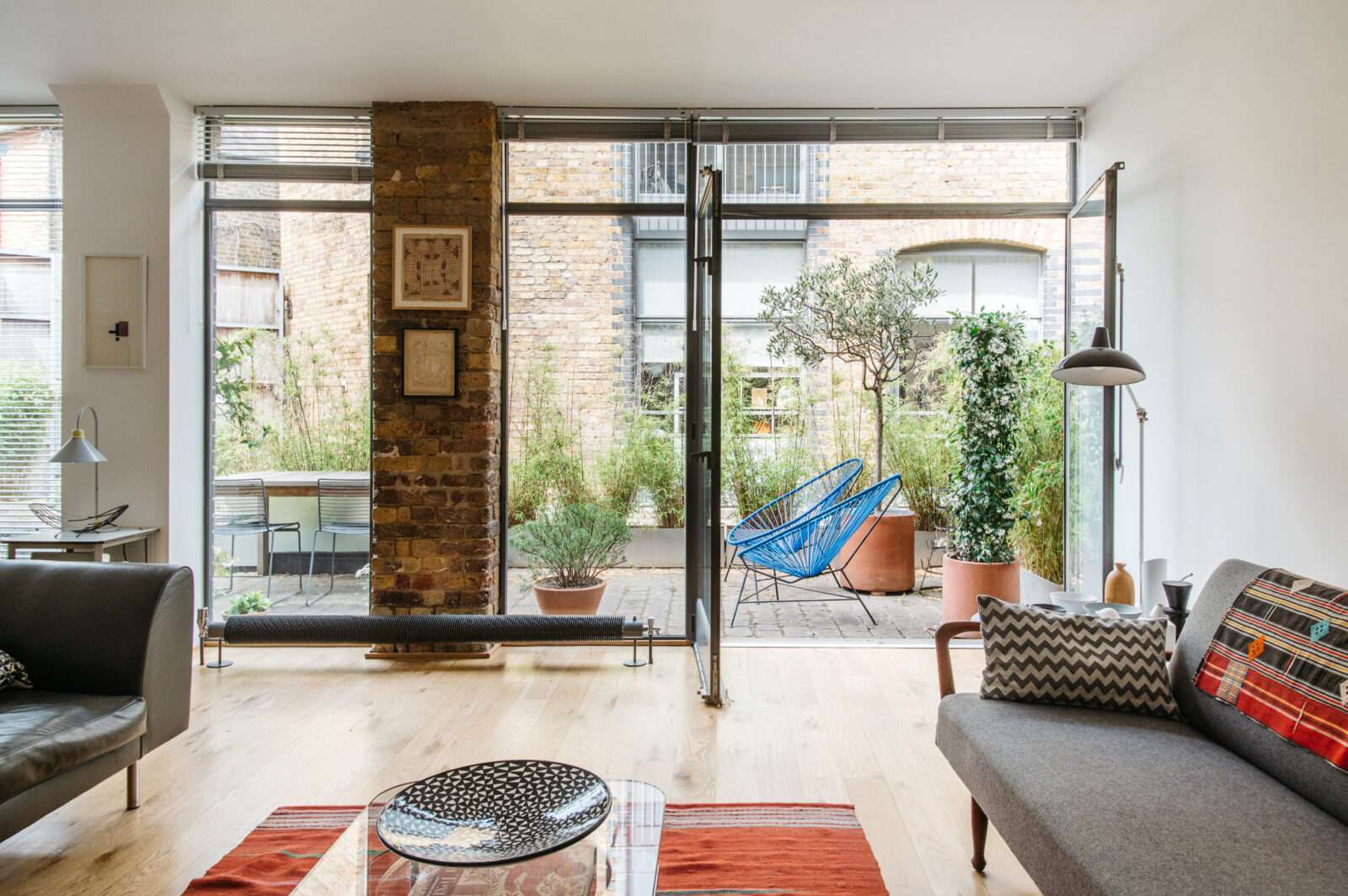
“I don’t have that much of my own art in the house. In a way, I actually prefer to leave the work in the studio. I try and think about other things when I’m at home. But there are odd bits and pieces dotted around. Most of the pieces we have were gifts, or trades with other artists that we both know – artists that Ann’s worked with over the years, for example, or those that I’m very close to.
“We’ve got quite a lot of work from Latin America, where we’ve both worked separately – me mainly in Brazil, Ann more widely; she was involved in developing a collection of art for Tate. As a consequence, we both got to know a lot of Brazilian and Mexican artists. As with all our art, each of these pieces remind us of a specific moment in time. They all refer to a particular bit of our story. Our art is personal, it’s not a collection.”
